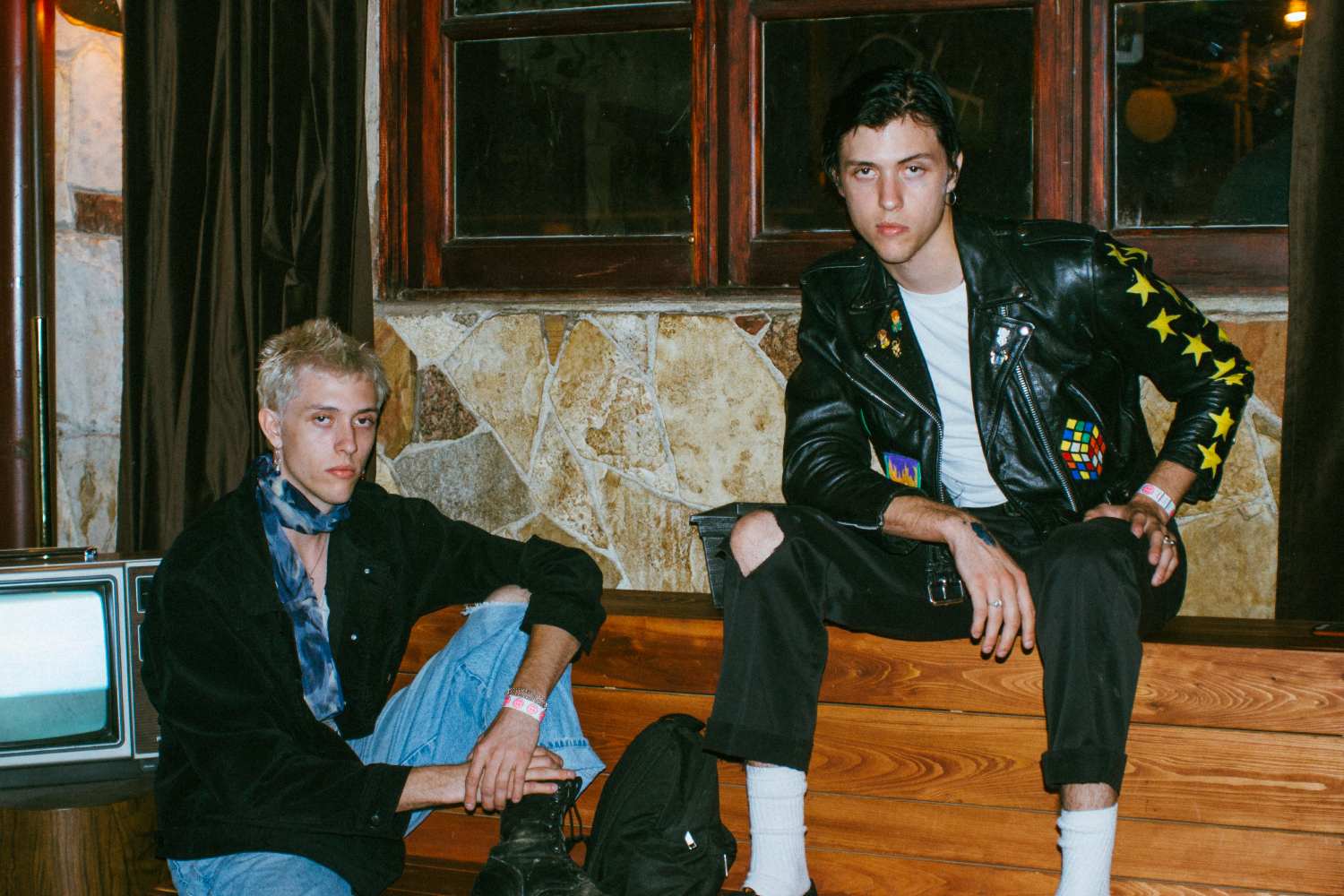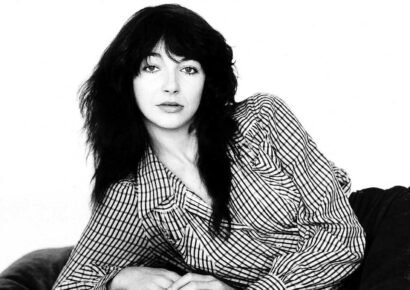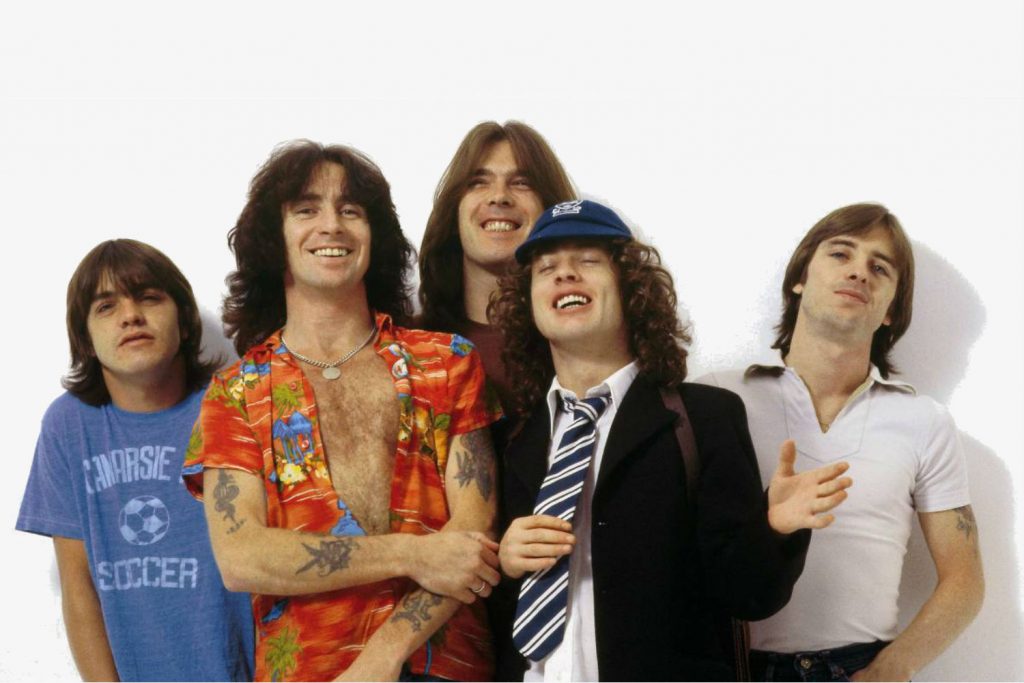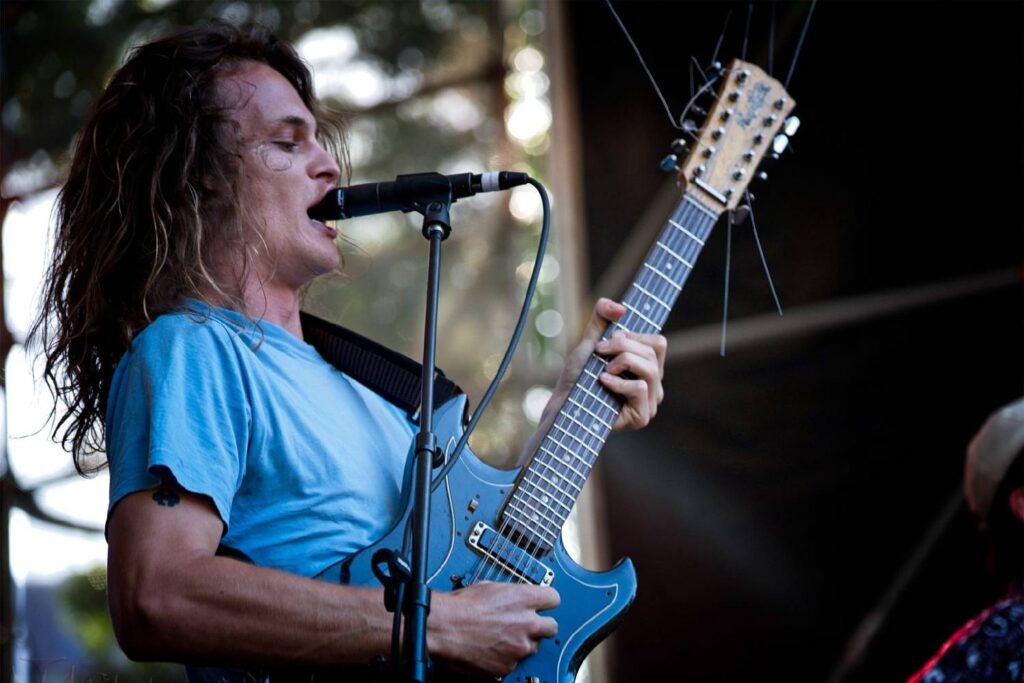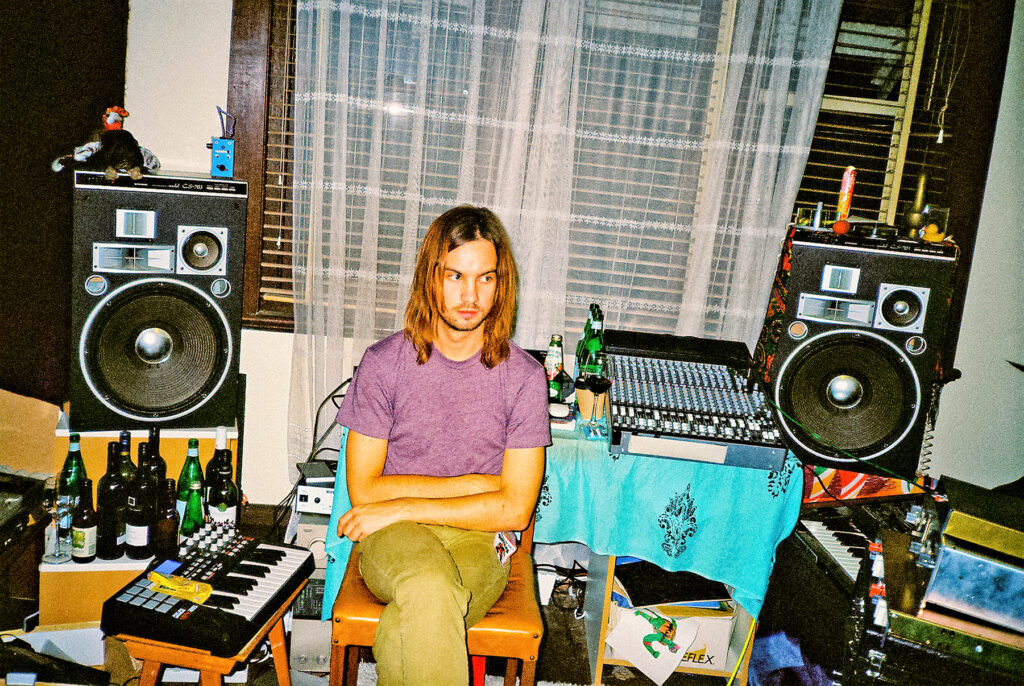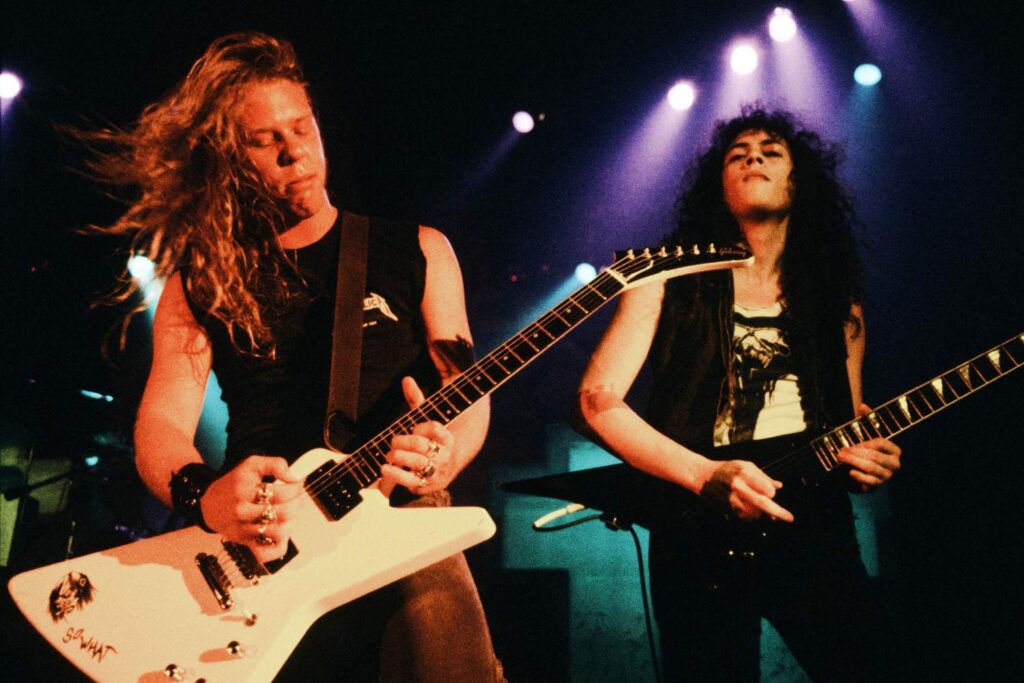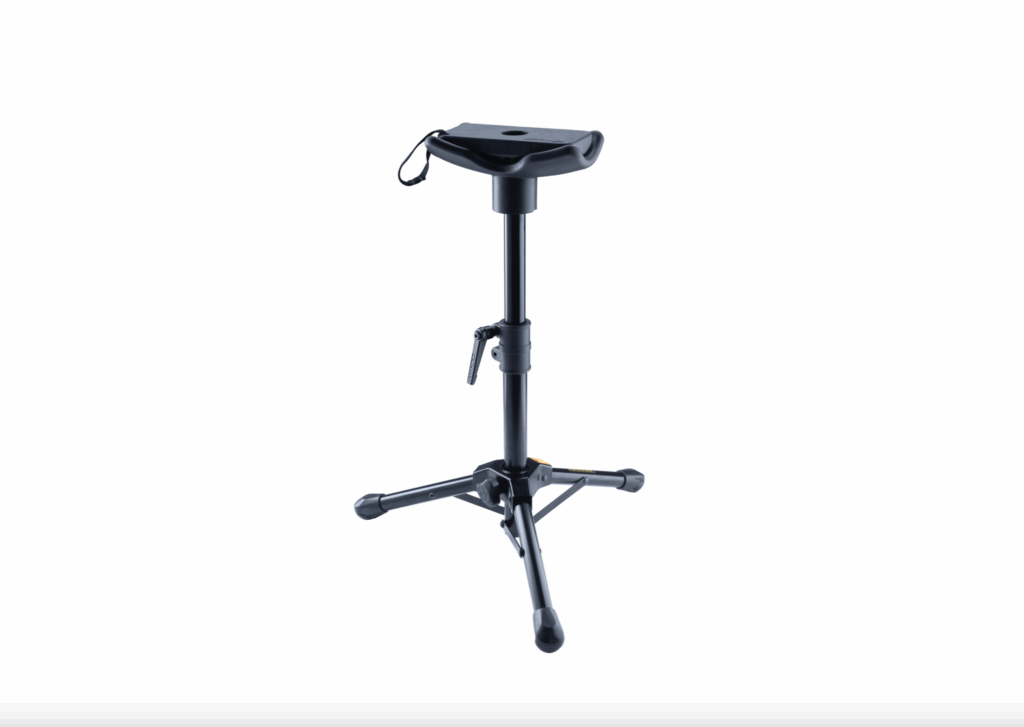The Garden, the punk duo hailing from their own imagined land of Vada Vada, while also calling Orange Country, California home, have been putting their own stamp on the punk landscape, since their debut The Life and Times of a Paperclip in 2013 and most recently Horseshit on Route 66.
Twin brothers Wyatt and Fletcher Shears have a dedicated fanbase that follow them for both their sound and uber cool fashion sense, with both brothers having modelled for brands such as Yves Saint Laurent, Hugo Boss, Ugg, and Balenciaga as a casual aside to their main focus: The Garden. The Garden cite videos of Minutemen as being a huge influence on their music; the chaotic, frantic energy being ever present in their sound, coupled with some surfy, grungy sonics produced by their choice of instruments. Defined primarily by a bass guitar and drums, The Garden are a ferocious blend of punk, noise, metal and indie. Their vocals, handled primarily by Wyatt, flip quickly from monotonal post-punk style poetry to raucous, distorted screaming and just about everything in between.
Read all the latest product & music industry news here.
Today, we’re diving into the tools behind The Garden’s wonderfully idiosyncratic sound that’s won fans the world over.
Wyatt Shears – Bass
The live and studio equipment used to produce the Garden’s sound has varied from album to album, but Wyatt’s iconic Tele-style bass is one of the more consistent pieces to have been used live and in the studio.
Hofner Tele Bass
The bass is a four-string Hofner Bass finished in a creamy, vintage white. If, like us here at Mixdown you’ve never seen one of these before, it’s because Wyatt randomly picked this four string up from a furniture store, in which the owner had it hanging around. The Hofner Tele Bass is generally found with pickups in the neck and bridge positions, but Wyatt seems to have done away with the neck pickup. This is likely a mod, Wyatt’s brittle, trashy bass tone requiring only the bridge pickup. More recent photos of Wyatt show a Hofner Tele Bass in black, with the vintage white creeping through as the paint chips at the edges. This may be the same bass refinished, though the neck pickup has reappeared.
Rickenbacker Bass Guitar
The cover art for Horseshit on Route 66 also reveals Wyatt’s penchant for a classic: the Rickenbacher. The vintage white bass is either a 4001 or 4003 and is pictured with Wyatt on the cover art, the boys dressed to the nines in a mixture of leather, plaid and clown paint. The body’s belly sports an ‘Orange County’ decal, and looks otherwise unmodified at face value: classic single coil in the neck position and covered bridge pickup.
Amps and pedals
A little research into Wyatt’s amps reveals a lot about the unique sound that The Garden conjure up – a mixture of loud, clean bass amps that amplify the unique tones from the bass itself. Wyatt’s amplification varies somewhat, from time to time he uses Gallien Krueger and Ashdown heads coupled with some form of cabinet, while a mixture of noisy pedals like the Earthquaker Devices Rainbow Machine, Electro-Harmonix Little Big Muff Pi, Visual Sound V2 Series V2JH Jekyll and Hyde, coupled with a Boss DD-3 Digital Delay bolster his unique, surfy slapback.
Honourable mentions
Wyatt has mentioned that he used a downtuned Mustang bass for the recording of Kiss My Super Bowl Ring. Some music videos show Wyatt with a Yamaha SB-1C “Flying Banana”, a bass similar to Stu Mackenzie’s Yamaha guitar played live with King Gizzard and the Lizard Wizard.
Fletcher Shears – Drums
Backing Wyatt on drums is Fletcher, oftentimes sat behind various clear plastic drum kits. Fletcher also handles the electronic samples that litter The Garden’s music.
Roland SPD-SX
The exact sample pad varies depending on the era of The Garden you’re watching, but Fletcher has consistently been seen with the Roland SPD-SX, a sample pad with 9 pads for triggering different sounds, samples and loops. The SPD-SX, now surpassed by the SPD-SX Pro, features additional controls to manipulate samples and loops on the fly if needed.
Ludwig Amber Vistalite Drumkit
This amber finish specifically, can be seen in the video clip for “All Smiles Over Here” as well as in multiple live appearances. Vistalite is a Ludwig specific material, producing a bouncy, controlled sound rather than the deep, bombastic tones of wood drum shells.
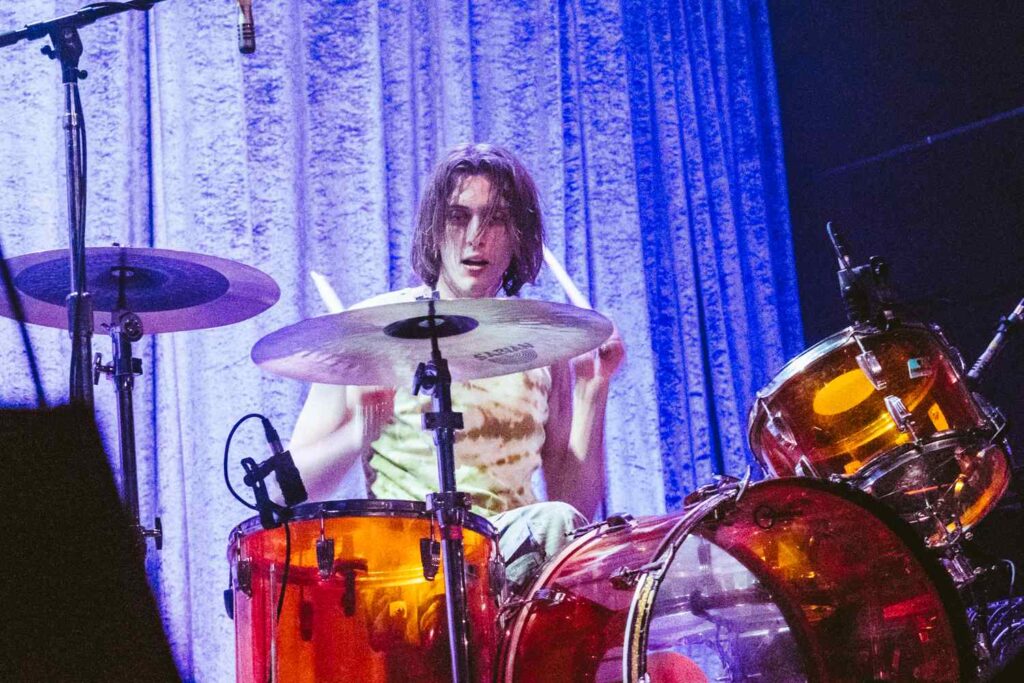
House kits
Much like his brother, who often plays whatever loud bass amp is available, Fletcher has a penchant for using house kits in the venues The Garden plays. Fletcher said in a 2019 interview before a show, “Any chance I can play a house kit, I’m down, so that’s what I’m doing tonight.”
It’s important to mention the use of saturation, distortion and overdrive in their production, an important part of their sonic aesthetic. Distortion is used quite heavily on drums, particularly audible on tracks like “Orange County Punk Rock Legends” and “Good News”, with all the frequencies of the drums being squashed together for maximum impact, the drum hits occupying a lot of space and creating more of a dichotomy with the silence between hits.
A deep dive into the gear used to create The Garden’s sound reveals a unique take on punk that takes cues from the early days of the 70s and 80s, and says a lot about the Shears brothers’ virtues. Their gear is not what defines them, it’s the sounds they make that do, and they’re happy to float with whatever gear might be available from venue to venue. Despite a few choice pieces, like Wyatt’s Hofner bass and Fletcher’s Vistalite kits, the sound of The Garden is shaped by the ferocity, groove and tenacity of the pair of twins, models and punk rockers.
Keeping reading about The Garden’s opinions on the state of punk and Orange County here.
